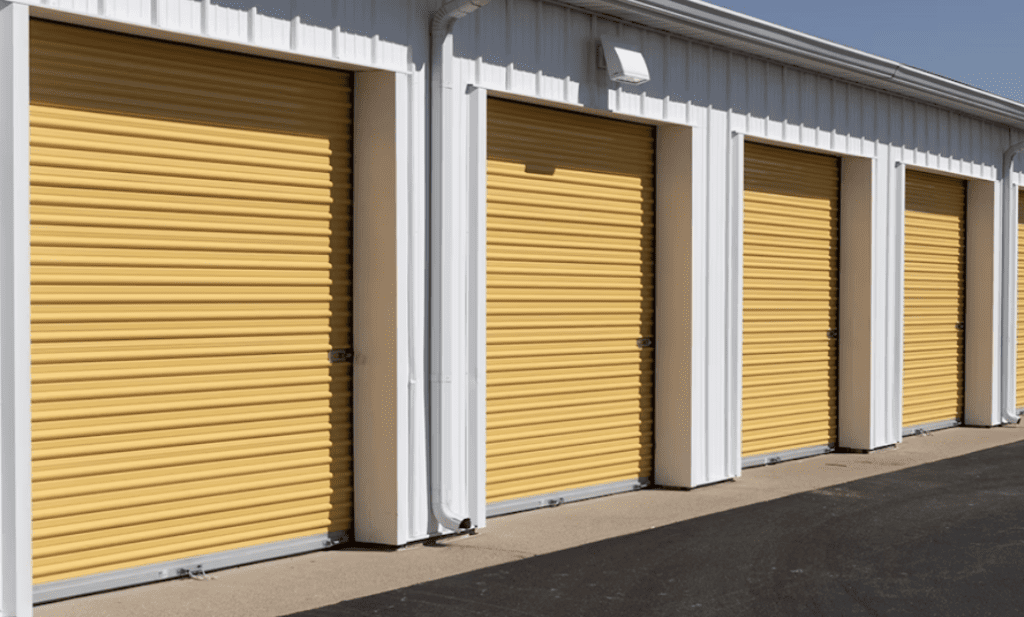For many investors venturing into real estate for the first time, investing in residential property is the most straight-forward and easy to understand. After all, most people have leased or owned a residential property at some point in their life. They can grasp how residential buildings operate.
Yet a narrow focus on residential may cause an investor to lose sight of other, more lucrative opportunities. One of those opportunities is in self-storage, a booming asset class worth an estimated $48 billion and growing.
In this article, we provide a primer on the self-storage industry and discuss some of the pros and cons for investors to consider when weighing a self-storage opportunity. Read on to learn more.
Defining Self-Storage
Simply put, a self-storage facility is a space, usually subdivided into multiple units, that can be rented to third parties to use as convenient and fortified storage in which they can store their belongings.
The need for self-storage is vast. People use self-storage for a variety of purposes, including to supplement their existing storage, to store items during home renovations, for archiving and decluttering purposes, during various transitions in life, and when they are on the move.
Self-storage is typically classified into three “classes” as follows:
- Class A self-storage: these facilities are newly constructed (within 10-15 years), feature modern amenities such as climate control, are professionally managed, charge the highest rent, and have generally low vacancy rates. Class A self-storage is well-located and will often be coupled with other akin uses, such as a U-Haul rental or a UPS store.
- Class B self-storage: these properties are older (usually 15+ years old), are well maintained but may lack 24/7 on-site management, have limited amenities, and generally rent for average prices to low- and middle-income earners. These properties will usually be located close to main roads but not necessarily in prime locations.
- Class C self-storage: these facilities are older, in less desirable locations (often off-the-beaten-path), have few if any amenities, and limited security. These properties will often have the lowest rent and may require significant property improvements in order to generate a sufficient return for investors.
There is no “best” or “worst” class of self-storage. Each can be a worthwhile investment, depending on an investor’s risk tolerance and anticipated business plan. A value-add oriented self-storage sponsor can often bring Class B/C properties in line with Class A self-storage facilities over time.
History of the Self-Storage Industry
The self-storage industry has changed dramatically over the last 50 years, particularly as it relates to design and the level of amenities these facilities provide. Long ago, self-storage buildings were simple, long warehouse facilities with garage doors placed intermittently that opened into partitioned spaces where people would store their belongings. There might be a fence around the property (or not), but in general, security at these properties was fairly limited.
Self-storage buildings were often reserved for irregularly shaped parcels or otherwise forgotten plots of land that people struggled to develop for other uses. In many respects, they were the development of last resort when no other project would pencil out.
Fast forward to today. The self-storage industry is more than a cottage industry. Today, it’s a desirable asset class. Self-storage is no longer tucked away on some forgotten land. Today, self-storage is located in major markets, in heavily-trafficked areas alongside prominent uses like grocery stores and big box retail.
Self-storage facilities have also skyrocketed in value as they have become more modern. Today, self-storage facilities are often multi-story buildings featuring climate-controlled units of varying sizes. They have robust security features including things like automatic gates. Many are coupled with akin uses, such as U-Haul trucking facilities, to provide a one-stop-shop for those looking to move and then house their goods.
The Pros and Cons of Investing in Self-Storage Real Estate
Historically low interest rates and the asset’s positive fundamentals are starting to draw investors to self-storage with record speed. To be sure, self-storage is not a foolproof investment. There is risk, just as there is with any asset class. It is important for prospective investors to understand the pros and cons of the self-storage real estate industry before moving forward.
Here are some of the most pertinent pros and cons to consider:
- Pro: A low-maintenance asset.
Advances in technology (e.g., lighting and security systems) allow owners to operate self-storage facilities with relatively little supervision. Moreover, since each unit is essentially just a core and shell, very little maintenance is required. Most of these properties have small, if any, common areas to maintain and landscaping is sparse. Among all real estate property types, self-storage is one of the easiest and most affordable to maintain over time.
- Pro: A potentially stable, cash-flowing asset class.
Self-storage units have the potential to provide stable, consistent cash flow on a monthly basis. The short-term nature of the leases makes it easy for an owner to evict a tenant for nonpayment of rent, and then that unit can quickly be released, especially if a facility is operating with a wait list. As demand increases, owners can marginally increase rents-even by $2 to $5 per month-since most tenants are not locked into long-term, fixed rate leases. Moreover, administrative fees, late fees, and retail sales can boost cash flow further.
- Pro: Potential to diversify income streams.
While the base rent for individual units will always be the primary source of income for a self-storage operator, those with well-located facilities can utilize their building or property to diversify the products or services they offer. For example, self-storage operators with significant land may offer covered but unheated outdoor storage on excess land, spaces that can be used for goods that someone might otherwise store in a garage or shed. Operators might also partner with a company like U-Haul to make trucks or vans available for rent. Owners might also operate a fuel station, janitorial business, or other industrial service at their self-storage property as a means of diversifying their income streams and seeking to increase total cash flow.
- Pro: Historically recession resilient.
When the economy is good, people move, invest in home renovations, and buy more goods – each of which increases demand for self-storage. During recessionary periods, people downsize, move-in with roommates, and are sometimes evicted from their apartments. Each of these scenarios typically increases demand for self-storage as well. The multiple demand drivers for self-storage have historically made this an otherwise recession resilient asset class.
- Pro: Competitive financing.
Because many real estate owners also operate the self-storage business (i.e., an owner-operator), financing for the acquisition and any necessary improvements can be very attractive. Low loan-to-value, non-recourse loans are available through many banks. SBA loans are another attractive option for owner-operators. Many of these loans provide a substantial interest-only period to help lower costs while the owner stabilizes the facility.
- Con: Short-term leases.
Self-storage leases generally operate on a month-to-month basis. This can result in high turnover and requires an operator to consistently market the property to ensure units quickly released upon turnover.
- Con: Potential Risk of oversupply.
Since self-storage facilities are relatively inexpensive to build and maintain, they get built quickly and easily during times of especially high demand. However, once demand tapers, there can be a resulting oversupply that puts downward pressure on rents at all facilities. It is important for any prospective investor to consider both existing and planned (i.e., permitted) competition within a certain radius of the facility they are looking to purchase.
- Con: Demand driven by hyper-local conditions.
A common mistake that self-storage investors make is purchasing a facility based on “planned” new housing construction. For example, a self-storage developer may go into an area with a sign that indicates an area is expecting “1,000 new housing units, coming soon!”. However, there’s no guarantee that those housing units ever materialize. Any change in the economy can halt new construction of those units and even if pre-permitted, those homes may never get built. Similarly, an operator may overemphasize demand from a local employer (e.g., a naval base) but if that employer shuts down, demand for self-storage could evaporate overnight. Prospective investors will want to be sure there is sufficient existing demand and that this demand is diversified to safeguard their investment.
- Con: Not entirely hands-off.
Many people wrongly assume that self-storage facilities can run themselves. While there is a lot that can be done to lower operational costs, these properties still need active management to ensure their success. Ongoing repairs and maintenance are necessary to keep the property in proper working order. Any investor will want to have a strong business plan in place prior to purchasing a self-storage facility.
Is self-storage right for you?
There are many reasons to consider investing in the self-storage industry, several of which we have identified above. Self-storage remains a highly fragmented asset class. Many facilities are still owned by mom-and-pop operators who are on the verge of retirement. This creates an opportunity for those looking to enter the market for the first time, especially for those who bring a more professional mindset to future operations and facility maintenance.
However, self-storage is far from risk-free. There are many nuances to this asset class that are often only learned through first-hand experience. Anyone considering investing in self-storage may want to dip their toes in the water by investing alongside an experienced sponsor who will be able to maximize returns on investors’ behalf, such as a Delaware Statutory Trust (DST).
Are you ready to learn more about self-storage investment opportunities? Contact Perch Wealth today to learn how to get started.


